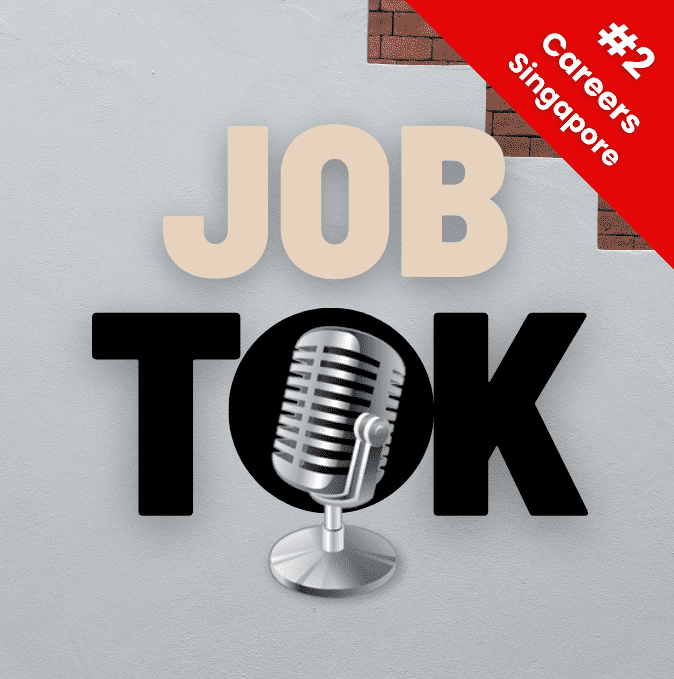JT12 | Varun Sharma On How To Navigate A Dynamic Organization
When mapping your career path, especially in a larger organization, there is an often-faced conundrum. Should I stick to the same line of business, becoming a domain or niche expert, or should I leverage the internal mobility in the organization, whereby I can get the opportunities to actually change roles and lines of business?
What is the path that helps accelerate and secure your future the best? Also, as a hiring manager, should you look to get people from the same line, or should you be looking to get diversity? And by diversity, I do not mean identity diversity, but diversity of experience and thought process.
Table of Contents
Discussion Topics: Varun Sharma On How To Navigate A Dynamic Organization
- The transition from Sales to Product strategy.
- How do you navigate politics?
- Things to be aware of when shifting roles.
- Advices on making your jump.
Transcript: Varun Sharma On How To Navigate A Dynamic Organization
Welcome to another episode of JobTok. Hi there. I’m Neha. I have worked in a bank in almost the same role for 15 years, but I am curious to hear from the other side. Today I have with me, Varun Sharma. He is a senior executive at Google and has worn multiple hats in that organization and thrived with each shift. We will be picking his brain on how he has been able to do this, and what are the pointers to keep in mind, both as the employer and as the hiring manager.
Hi Varun. Thanks a lot for coming on this podcast and sharing your pearls of wisdom. So both of us are veterans of having spent more than a decade in the same company, a rarity these days, but I know that unlike me, you have actually worn different hats in very different LOBs in Google. You started in sales, right? How did that work for you?
Hi Neha, thanks for having me here. I joined Google in 2008 My earlier role at Google was to lead vertical-oriented Sales teams which were tasked with Customer success / CSAT and Google revenue. For example, back in 2012, I was leading the eCommerce vertical in India managing relationships with all large eCommerce Google clients such as Flipkart, Snapdeal, Amazon, etc. The role needed a combination of Relationship management, biz dev skills, and an ability to deeply understand Marketing and digital advertising in particular. I was able to build these skill sets through a combination of early experiences in IBM and Google coupled with an enthusiasm for people dynamics and relationships.
So after that, you moved from India to Singapore and the role changed too? Was it a massive pivot? How did that your career transition work?
Entering into a Product Strategy role in Sales was a sea change for me. The Product strategy role revolved around leading the Commercialization of our Ad Products in the APAC region. This entailed being responsible for Product prioritization, solutions deployment, and also for influencing the global Product roadmap. Stakeholders were mostly internal Sales and Product execs operating in APAC and in our Global headquarters.
The pace and dynamics of this role were very different as often my team was working on very long-term Product gaps or opportunities that we were observing in APAC. Another massive change for me was the fact that this role entailed leading from the side OR behind instead of leading from the front. Finally, it also required a certain level of maturity and resilience as often our projects were slow-moving and hard to expedite. In many cases, we had nothing tangible to show for our efforts despite putting in our best.
Ah, So it was a change in every aspect I would say. The pace of business, how you define KPIs, stakeholders where they go from external to internal. I think we all know sometimes how difficult those internal-looking roles can be, as you have to be careful about politics, stepping on people’s toes, and a bit more subjectivity woven in, in defining success. So how do you navigate that?
First of all, one needs to understand that most people would like to collaborate and augment/advance their goals if they see a clear linkage between the collaboration effort and their goals. The key is to carefully and simply articulate the collective good/benefit for all parties involved.
However, collaboration is much more effective when you have trust and credibility in a relationship. So for me, the formula is to earn the trust and credibility of my key stakeholders. Once you have the trust equity in the Bank, it’s easier for you to dip into it and get the job done. To reiterate, lucid articulation of ‘What’s in it for your stakeholder’ is critical to move ahead.
But one thing on collaboration to be very wary of is the ‘collaboration tax’ itself. At what point does collaboration cease to be a collective benefit is something you need to be very mindful of. That seems like a very reasonable way of getting people to talk the same language. So clearly successful pivots can be made within the same organization, and in fact help you as an individual to gain a broader perspective of different LOBs, while enjoying the familiarity of the same org and work culture, and even for the organization, it helps to have employees capable of wearing multiple hats or do you think there are disadvantages to shifting roles?
- There are only advantages in my head. Diversity of experience is key to learning and growth. You’re more likely to be a well-rounded leader if you have thrown yourself into different uncomfortable but exciting situations. The more you prove yourself in different ecosystems the more confidence you have to stake your claim for the next big and potentially unknown thing.
- However, I do not recommend making rapid changes. I recommend changing when you have sufficiently learned and given back to your new business. Ideally, one should leave a legacy behind before moving on. Of course, there are exceptions to this especially when you land in a place that is not aligned with your values, and goals in life or simply does not give you the meaning you want from work.
We have a lot of young audiences, who are probably in the middle of their first jump. Something you would like to say to them? Based on your own learnings?
My advice would be to
- Invest time in building your equity, trust, and credibility. This happens when you focus on value exchange with limited self-orientation. That is, focus more on what your customer/stakeholder needs. In simple words, focus on customer centricity, deliver what you promise, and be there doing good or bad times.
- The second key thing is truly having the right level of competency/expertise in your field. You have to push hard to get to a space where people look up to you for your thought leadership. Being nice is good but not self-sufficient in itself.
- Lastly, come with an open mind. In modern-day companies, if you cannot change or adapt then you cannot survive. The first thing about change management is the simple acknowledgment that change is good.
And what would be something you would tell them to avoid? Something you wish you could have of course corrected in your earlier days?
I would tell my younger self to Give myself more time to invest in my own skills and expertise and not be in a hurry to ‘earn from stripes’ from day one.
Ah yes. The hurry we are always in, in our youth. Oh god, I am making us sound like two old fogies, which we clearly are NOT! But thank you Varun for your time today.
Thanks, Neha.
Summary: Varun Sharma On How To Navigate A Dynamic Organization
I am sure our audience will find this invaluable when considering pivots in a large organization and can use them as guiding tools for being successful while doing this.
Well, that’s it for today folks. Thank you very much for tuning in. If you liked this episode, do subscribe to our website where we have a host of other such invaluable navigation tools for a successful career, and in the near future will also give you a chance to ask questions directly to experts like Varun, who have successfully navigated across a large dynamic organization. I am Neha with JobTok. See you next time.



